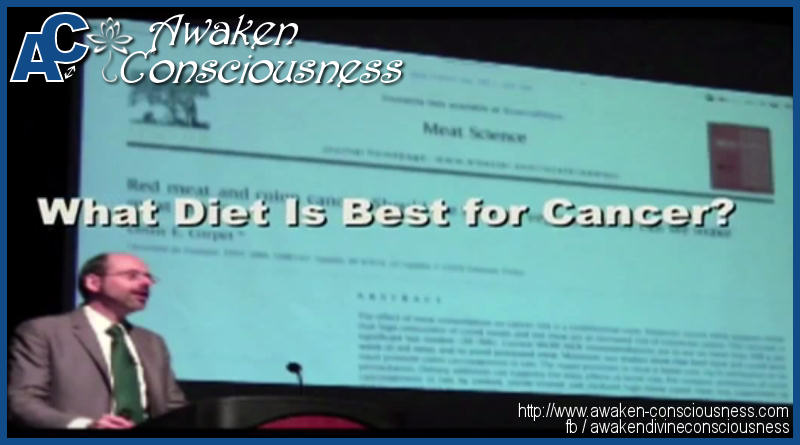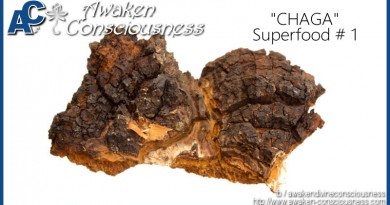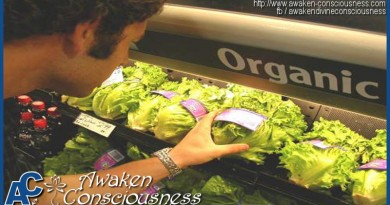DRASTICALLY LOWER CHANCE GETTING CANCER
DRASTICALLY LOWER CHANCE GETTING CANCER
(Get comfortable, this is a lengthy article 😉 )
The World Health Organization has determined that dietary factors account for at least 30 percent of all cancers in Western countries and up to 20 percent in developing countries.
When cancer researchers started to search for links between diet and cancer, one of the most noticeable findings was that people who avoided meat were much less likely to develop the disease. Large studies in England and Germany showed that vegetarians were about 40 percent less likely to develop cancer compared to meat eaters.1-3 In the United States, researchers studied Seventh-day Adventists, a religious group that is remarkable because, although nearly all members avoid tobacco and alcohol and follow generally healthful lifestyles, about half of the Adventist population is vegetarian, while the other half consumes modest amounts of meat.
This fact allowed scientists to separate the effects of eating meat from other factors. Overall, these studies showed significant reductions in cancer risk among those who avoided meat.4 In contrast, Harvard studies showed that daily meat eaters have approximately three times the colon cancer risk, compared to those who rarely eat meat.
A number of hypotheses have been advanced to explain the connection between meat consumption and cancer risk. First, meat is devoid of fiber and other nutrients that have a protective effect. Meat also contains animal protein, saturated fat, and, in some cases, carcinogenic compounds such as heterocyclic amines (HCA) and polycyclic aromatic hydrocarbons (PAH) formed during the processing or cooking of meat. HCAs, formed as meat is cooked at high temperatures, and PAHs, formed during the burning of organic substances, are believed to increase cancer risk. In addition, the high fat content of meat and other animal products increases hormone production, thus increasing the risk of hormone-related cancers such as breast and prostate cancer.
In 2007, the American Institute for Cancer Research (AICR) published their second review of the major studies on food, nutrition, and cancer prevention. For cancers of the oesophagus, lung, pancreas, stomach, collorectum, endometrium, and prostate, it was determined that red meat (beef, pork, or lamb) and processed meat consumption possibly increased cancer risk. For colorectal cancer, a review of the literature determined that there is convincing scientific evidence that red meat increased cancer risk and that processed meat, saturated/animal fat, and heavily cooked meat were also convincing of increased risk.5
Carcinogenic Compounds in Cooked Meat
Heterocyclic Amines
HCAs, a family of mutagenic compounds, are produced during the cooking process of many animal products, including chicken, beef, pork, and fish. Even meat that is cooked under normal grilling, frying, or oven-broiling may contain significant quantities of these mutagens.6,7,8 The longer and hotter the meat is cooked, the more these compounds form. In some studies, grilled chicken has formed higher concentrations of these cancer-causing substances than other types of cooked meat.9
The major classes of heterocyclic amines include amino-imidazo-quinolines, or amino-imidazo-quinoxalines (collectively called IQ-type compounds), and amino-imidazo-pyridines such as PhIP. IQ-type compounds and PhIP are formed from creatine or creatinine, specific amino acids, and sugars.10 All meats (including fish) are high in creatine, and HCA formation is greatest when cooking meat at high temperatures, as is most common with grilling or frying. Consumption of well-done meat and PhIP has been associated with increased risk of breast cancer and colon cancer, as discussed in greater detail below. A recent case-control study at the University of Utah that included 952 subjects with rectal cancer and 1205 controls found that men and women with the highest consumption of processed or well-cooked meat had an increased risk of rectal cancer.11
Polycyclic Aromatic Hydrocarbons
Grilling or broiling meat over a direct flame results in fat dropping on the hot fire and the production of polycyclic aromatic hydrocarbon-containing flames. Polycyclic aromatic hydrocarbons (PAHs) adhere to the surface of food, and the more intense the heat, the more PAHs are present.5 They are widely believed to play a significant role in human cancers.12 A fairly consistent association between grilled or broiled, but not fried, meat consumption and stomach cancer implies that dietary exposure to PAHs may play a role in the development of stomach cancer in humans.5

Meat and Breast Cancer
Countries with a higher intake of fat, especially fat from animal products, such as meat and dairy products, have a higher incidence of breast cancer.13,14,15 In Japan, for example, the traditional diet is much lower in fat, especially animal fat, than the typical western diet, and breast cancer rates are low. In the late 1940s, when breast cancer was particularly rare in Japan, less than 10 percent of the calories in the Japanese diet came from fat.16 The American diet is centered on animal products, which tend to be high in fat and low in other important nutrients, with 30 to 35 percent of calories coming from fat. When Japanese girls are raised on westernized diets, their rate of breast cancer increases dramatically. Even within Japan, affluent women who eat meat daily have an 8.5 times higher risk of breast cancer than poorer women who rarely or never eat meat.17 One of the proposed reasons is that fatty foods boost the hormones that promote cancer.
According to new findings from the Shanghai Women’s Health Study, soy food intake provides protection against premenopausal breast cancer when consumed during adolescence and as an adult. The usual dietary intake of 73,223 Chinese women during adulthood and adolescence was assessed after a mean follow-up of 7.4 years. Those with the highest intake of soy protein or isoflavone versus those with the lowest had about half the risk of premenopausal breast cancer regardless of age at time of consumption. No significant association with soy foods was found for postmenopausal breast cancer.18
The consumption of high-fat foods such as meat, dairy products, fried foods, and even vegetable oils causes a woman’s body to make more estrogens, which encourage cancer cell growth in the breast and other organs that are sensitive to female sex hormones. This suggests that, by avoiding fatty foods throughout life, hormone-related cancer risk decreases. A 2003 study, published in the Journal of the National Cancer Institute, found that when girls ages eight to ten reduced the amount of fat in their diet—even very slightly—their estrogen levels were held at a lower and safer level during the next several years. By increasing vegetables, fruits, grains, and beans, and reducing animal-derived foods, the amount of estradiol (a principal estrogen) in their blood dropped by 30 percent, compared to a group of girls who did not change their diets.19
Harvard researchers recently conducted a prospective analysis of 90,655 premenopausal women, ages 26 to 46, enrolled in the Nurses’ Health Study II and determined that intake of animal fat, especially from red meat and high-fat dairy products, during premenopausal years is associated with an increased risk of breast cancer. Increased risk was not associated with vegetable fats.20
In addition, researchers at the Ontario Cancer Institute conducted a meta-analysis of all the case-control and cohort studies published up to July 2003 that studied dietary fat, fat-containing foods, and breast cancer risk. Case-control and cohort study analyses yielded similar risk results, with a high total fat intake associated with increased breast cancer risk. Significant relative risks for meat and saturated fat intake also emerged, with high meat intake increasing cancer risk by 17 percent and high saturated fat intake increasing cancer risk by 19 percent.21
Several studies show meat intake to be a breast cancer risk factor, even when confounding factors, such as total caloric intake and total fat intake, are controlled.22,23 Part of the reason may be that meat becomes a source of carcinogens and/or mutagens, such as HCAs, that are formed while cooking meat at high temperatures. A review of HCAs showed that certain HCAs are distributed to the mammary gland and that humans can activate HCAs metabolically.24 As a consequence, frequent meat consumption may be a risk factor for breast cancer.22

Colorectal Cancer and Meat
As with breast cancer, frequent consumption of meat, particularly red meat, is associated with an increased risk of colon cancer.25,26 Total fat and saturated fat, which tend to be substantially higher in animal products than in plant-derived foods, and refined sugar, all heighten colon cancer risks. At Harvard University, researchers zeroed in on red meat, finding that individuals eating beef, pork, or lamb daily have approximately three times the colon cancer risk, compared to people who generally avoid these products.26,27 A review of 32 case-control and 13 cohort studies concluded that meat consumption is associated with an increase in colorectal cancer risk, with the association being more consistently found with red meat and processed meat.12 And, in the recently published Cancer Prevention Study II, involving 148,610 adults followed since 1982, the group with the highest red meat and processed meat intakes had approximately 30 to 40 percent and 50 percent higher colon cancer risk, respectively, compared to those with lower intakes.28 In this study, high red meat intake was defined as 3 ounces of beef, lamb, or pork for men and 2 ounces for women daily, the amount in a typical hamburger. High processed meat intake (ham, cold cuts, hot dogs, bacon, sausage) was defined as 1 ounce eaten 5 or 6 times a week for men, and 2 or 3 times a week for women—the amount in one slice of ham. In addition, earlier studies have also indicated that those consuming white meat, particularly chicken, have approximately a threefold higher colon cancer risk, compared to vegetarians.29
Secondary bile acids are probably part of the problem. In order to absorb fat, the liver makes bile, which it stores in the gallbladder. After a meal, the gallbladder sends bile acids into the intestine, where they chemically modify the fats eaten so they can be absorbed. Unfortunately, bacteria in the intestine turn these bile acids into cancer-promoting substances called secondary bile acids. Meats not only contain a substantial amount of fat; they also foster the growth of bacteria that cause carcinogenic secondary bile acids to form.
Cooking methods that promote the formation of HCAs are believed to play a significant role in colorectal cancer risk. A case-control study in North Carolina that analyzed meat intake by level of doneness, cooking method, and estimated intake of HCAs in 620 colon cancer patients and 1038 controls, found that not only was red meat intake positively associated with colon cancer risk, but also pan-frying was the riskiest way to prepare meat due to high HCA formation.30 Confirmation of the link between frying and colorectal cancer risk was adduced in the review mentioned above, where high frying temperature was found to increase colon cancer risk almost twofold, and rectal cancer risk by 60 percent.12
Colorectal cancer is steadily becoming more common among young adults, according to an American Cancer Society analysis. Incidence rates among adults ages 20 to 49 increased 1.5 percent per year in men and 1.6 percent per year in women from 1992 to 2005. The increase may be tied to rising rates of obesity, a major risk factor for colorectal cancer. Increased consumption of meat (especially in fast food) over the past three decades could also be a key factor. Previous studies have suggested that diets free of red and processed meats and rich in plant-based foods may significantly reduce colorectal cancer risk.31
Meat Consumption and Prostate Cancer
Prostate cancer is one of the leading cancers among men in the U.S., and researchers have explored a number of possible dietary factors contributing to prostate cancer risk. These include dietary fat, saturated fat, dairy products, and meat, as well as dietary factors that may decrease risk, such as the consumption of carotenoids and other antioxidants, fiber, and fruit. As with breast cancer risk, a man’s intake of dietary fat, which is abundant in meat and other animal products, increases testosterone production, which in turn increases prostate cancer risk. One of the largest nested case-control studies, which showed a positive association between prostate cancer incidence and red meat consumption, was done at Harvard University in an analysis of almost 15,000 male physicians in the Physicians’ Health Study.32 Although this study primarily analyzed plasma fatty acids and prostate cancer risk, the authors found that men who consumed red meat at least five times per week had a relative risk of 2.5 for developing prostate cancer compared to men who ate red meat less than once per week. The most comprehensive dietary cohort study on diet and prostate cancer risk reported on nearly 52,000 health professionals in Harvard’s Health Professionals Follow-Up Study, which completed food frequency questionnaires in 1986.33 The report, based on 3 to 4 years of follow-up data, found a statistically significant relationship between higher red meat intake and the risk of prostate cancer, with red meat as the food group with the strongest positive association with advanced prostate cancer. These and other study findings suggest that reducing or eliminating meat from the diet reduces the risk of prostate cancer.34
A new review published in the Journal of Human Nutrition and Dietetics assessed whether certain modifications in diet have a beneficial effect on the prevention of prostate cancer. Results suggest that a diet low in fat, red meat, dairy, and calcium, yet high in fruits and vegetables is beneficial in preventing and treating prostate cancer. Consumption of highly processed or charcoaled meats, dairy products, and fats seemed to be correlated with prostate cancer.35
Other Cancers
Although not as extensively studied as breast, colon, and prostate cancer risk, a number of studies have concluded that meat consumption may play a significant role in kidney and pancreatic cancer risk. Three of eight case-control studies examining the relationship between renal cell carcinoma and meat consumption found a statistically significant increase in risk with a high consumption of meat. In addition, a prospective study in Japan found that people consuming meat daily had higher death rates from kidney cancer than those eating meat less frequently.5
Red meat and high glycemic index foods could be risk factors for kidney cancer, according to a 2009 study in the Journal of the American Dietetic Association. Researchers studied food questionnaires for 335 people with renal cell carcinoma, the most common form of kidney cancer, and 337 healthy controls. They found that men and women who ate red meat five or more times a week were more than four times as likely to develop the disease, compared to those who consumed red meat less than once a week. The study also found that white bread, white potatoes, and other high glycemic index foods increased the cancer risk threefold. High glycemic index foods affect insulin-like growth factors, which impact tumor development.36
Pancreatic cancer is relatively uncommon, yet it is frequently fatal, with fewer than 20 percent of cases surviving for one full year. Daily meat intake has been shown to be associated with increased pancreatic cancer risk in a number of prospective, cohort, and case-control studies.5 Some of these studies have singled out beef and pork consumption and have concluded there is a higher risk for pancreatic cancer with a higher intake of these foods.5
According to a new study, fat from red meat and dairy products is associated with increased risk of pancreatic cancer. As part of the National Institutes of Health-AARP Diet and Health Study, researchers followed and analyzed the diets of more than 525,000 participants to determine whether there is an association between dietary fat and pancreatic cancer. This same study found no association between plant-food fat and pancreatic cancer.37
A recent study in the British Journal of Cancer found that vegetarians are 12 percent less likely to develop cancer than meat-eaters. After following 61,000 meat-eaters and vegetarians for over 12 years, researchers also discovered that cancers of the blood—such as leukemia, multiple myeloma, and non-Hodgkin lymphoma—were drastically reduced by as much as 45 percent for those following a vegetarian diet. Although this study points to an overall reduced risk, this may well be an underestimate of the benefit of a vegetarian diet. Previous studies have shown as much as a 40 percent reduced risk for all cancers.38
Conclusion
Two themes consistently emerge from studies of cancer from many sites: vegetables and fruits help to reduce risk, while meat, animal products, and other fatty foods are frequently found to increase risk. Consumption of dietary fat drives production of hormones, which, in turn, promotes growth of cancer cells in hormone-sensitive organs such as the breast and prostate. Meat is devoid of the protective effects of fiber, antioxidants, phytochemicals, and other helpful nutrients, and it contains high concentrations of saturated fat and potentially carcinogenic compounds, which may increase one’s risk of developing many different kinds of cancer.
Vegetarian diets and diets rich in high-fiber plant foods such as whole grains, legumes, vegetables, and fruits offer a measure of protection.5 Fiber greatly speeds the passage of food through the colon, effectively removing carcinogens, and fiber actually changes the type of bacteria that is present in the intestine, so there is reduced production of carcinogenic secondary bile acids. Plant foods are also naturally low in fat and rich in antioxidants and other anti-cancer compounds. Not surprisingly, vegetarians are at the lowest risk for cancer and have a significantly reduced risk compared to meat-eaters.39
References
1. Thorogood M, Mann J, Appleby P, McPherson K. Risk of death from cancer and ischaemic heart disease in meat and non-meat eaters. Br Med J. 1994;308:1667-1670.
2. Chang-Claude J, Frentzel-Beyme R, Eilber U. Mortality patterns of German vegetarians after 11 years of follow-up. Epidemiology. 1992;3:395-401.
3. Chang-Claude J, Frentzel-Beyme R. Dietary and lifestyle determinants of mortality among German vegetarians. Int J Epidemiol. 1993;22:228-236.
4. Barnard ND, Nicholson A, Howard JL. The medical costs attributable to meat consumption. Prev Med. 1995;24:646-655.
5. World Cancer Research Fund. Food, nutrition, physical activity, and the prevention of cancer: A global perspective. American Institute of Cancer Research. Washington, DC:2007.
6. Skog KI, Johansson MAE, Jagerstad MI. Carcinogenic heterocyclic amines in model systems and cooked foods: a review on formation, occurrence, and intake. Food and Chem Toxicol. 1998;36:879-896.
7. Robbana-Barnat S, Rabache M, Rialland E, Fradin J. Heterocyclic amines: occurrence and prevention in cooked food. Environ Health Perspect. 1996;104:280-288.
8. Thiebaud HP, Knize MG, Kuzmicky PA, Hsieh DP, Felton JS. Airborne mutagens produced by frying beef, pork, and a soy-based food. Food Chem Toxicol. 1995;33(10):821-828.
9. Sinha R, Rothman N, Brown ED, et al. High concentrations of the carcinogen 2-amino-1-methyl-6-phenylimidazo-[4,5] pyridine [PhlP] occur in chicken but are dependent on the cooking method. Cancer Res. 1995;55:4516-4519.
10. Jagerstad M, Skog K, Grivas S, Olsson K. Formation of heterocyclic amines using model systems. Mutat Res. 1991;259(3-4):219-233.
11. Murtaugh MA, Ma KN, Sweeney C, Caan BJ, Slattery ML. Meat Consumption patterns and preparation, genetic variants of metabolic enzymes, and their association with rectal cancer in men and women. J Nutr. 2004;134(4):776-784.
12. Norat T, Riboli E. Meat consumption and colorectal cancer: a review of epidemiologic evidence. Nutr Rev. 2001;59(2):37-47.
13. Armstrong B, Doll R. Environmental factors and cancer incidence and mortality in different countries, with special reference to dietary practices. Int J Cancer. 1975;15:617-631.
14. Carroll KK, Braden LM. Dietary fat and mammary carcinogenesis. Nutrition and Cancer. 1985;6:254-259.
15. Rose DP, Boyar AP, Wynder EL. International comparisons of mortality rates for cancer of the breast, ovary, prostate, and colon, and per capita food consumption. Cancer. 1986;58:2363-2371.
16. Lands WEM, Hamazaki T, Yamazaki K, et al. Changing dietary patterns. Am J Clin Nutr. 1990;51:991-993.
17. Hirayama T. Epidemiology of breast cancer with special reference to the role of diet. Prev Med. 1978;7:173-195.
18. Sang-Ah Lee, Xiao-Ou Shu, Honglan Li, et. al., Adolescent and adult soy food intake and breast cancer risk: results from the Shanghai Women’s Health Study. Am J Clin Nutr. 2009; 89: 1920-1926.
19. Dorgan JF, Hunsberger SA, McMahon RP, et al. Diet and sex hormones in girls: findings from a randomized controlled clinical trial. J Natl Cancer Inst. 2003;95:132-141.
20. Cho E, Spiegelman D, Hunter DJ, et al. Premenopausal fat intake and risk of breast cancer. J Natl Cancer Inst. 2003;95:1079-1085.
21. Boyd NF, Stone J, Vogt KN, Connelly BS, Martin LJ, Minkin S. Dietary fat and breast cancer risk revisited: a meta-analysis of the published literature. Br J Cancer. 2003;89(9):1672-1685.
22. De Stefani E, Ronco A, Mendilaharsu M, Guidobono M, Deneo-Pellegrini H. Meat intake, heterocyclic amines, and risk of breast cancer: a case-control study in Uruguay. Cancer Epidemiol Biomarkers Prev. 1997;6(8):573-581.
23. Matos EL, Thomas DB, Sobel N, Vuoto D. Breast cancer in Argentina: case-control study with special reference to meat eating habits. Neoplasma. 1991;38(3):357-366.
24. Snyderwine EG. Some perspectives on the nutritional aspects of breast cancer research. Food-derived heterocyclic amines as etiologic agents in human mammary cancer. Cancer. 1994;74(3 suppl):1070-1077.
25. Singh PN, Fraser GE. Dietary risk factors for colon cancer in a low-risk population. Am J Epidemiol. 1998;148(8):761-74.
26. Giovannucci E, Rimm EB, Stampfer MJ, Colditz GA, Ascherio A, Willett WC. Intake of fat, meat, and fiber in relation to risk of colon cancer in men. Cancer Res. 1994;54(9):2390-2397.
27. Willett WC, Stampfer MJ, Colditz GA, Rosner BA, Speizer FE. Relation of meat, fat, and fiber intake to the risk of colon cancer in a prospective study among women. N Engl J Med. 1990;323:1664-1672.
28. Chao A, Thun MJ, Connell CJ, et al. Meat consumption and risk of colorectal cancer. JAMA. 2005;293:172-82.
29. Fraser GE. Associations between diet and cancer, ischemic heart disease, and all-cause mortality in non-Hispanic white California Seventh-day Adventists. Am J Clin Nutr. 1999;70(suppl):532S-538S.
30. Butler LM, Sinha R, Millikan RC, Martin CF, Newman B, Gammon MD, Ammerman AS, Sandler RS. Heterocyclic amines, meat intake, and association with colon cancer in a population-based study. Am J Epidemiol. 2003;157(5):434-445.
31. Siegel RL, Jemal A, Ward EM. Increase in incidence of colorectal cancer among young men and women in the United States. Cancer Epidemiol Biomarkers Prev. 2009;18:1695-1698.
32. Gann PH, Hennekens CH, Sacks FM, Grodstein F, Giovannucci EL, Stampfer MJ. Prospective study of plasma fatty acids and risk of prostate cancer. J Natl Cancer Inst. 1994;86(4):281-286.
33. Giovannucci E, Rimm EB, Colditz GA, Stampfer MJ, Ascherio A, Chute CC, Willett WC. A prospective study of dietary fat and risk of prostate cancer. J Natl Cancer Inst. 1993;85(19):1571-1579.
34. Kolonel LN. Nutrition and prostate cancer. Cancer Causes Control. 1996;7(1):83-44.
35. Ma RW, Chapman K. A systematic review of the effect of diet in prostate cancer prevention and treatment. J Hum Nutr Diet. 2009;22(3):187-1899; quiz 200-202. Epub 2009 Apr 1.
36. Dolwick Grieb SM, Theis RP, et al. Food groups and renal cell carcinoma: results from a case-control study. J Am Diet Assoc. 2009;109:656-667.
37. Thiébaut ACM, Jia L, Silverman DT, et al. Dietary fatty acids and pancreatic cancer in the NIH-AARP Diet and Health Study. J Natl Cancer Inst. 2009;101:1001-1011.
38. Key TJ, Appleby PN, Spencer EA, et. al. Cancer incidence in British vegetarians. British Journal of Cancer. 2009;101:192–197.
39. Phillips RL. Role of lifestyle and dietary habits in risk of cancer among Seventh-day Adventists. Cancer Res. 1975;35(suppl):3513-3522.
Source: pcrm.org
DRASTICALLY LOWER CHANCE GETTING CANCER DRASTICALLY LOWER CHANCE GETTING CANCER DRASTICALLY LOWER CHANCE GETTING CANCER DRASTICALLY LOWER CHANCE GETTING CANCER DRASTICALLY LOWER CHANCE GETTING CANCER




